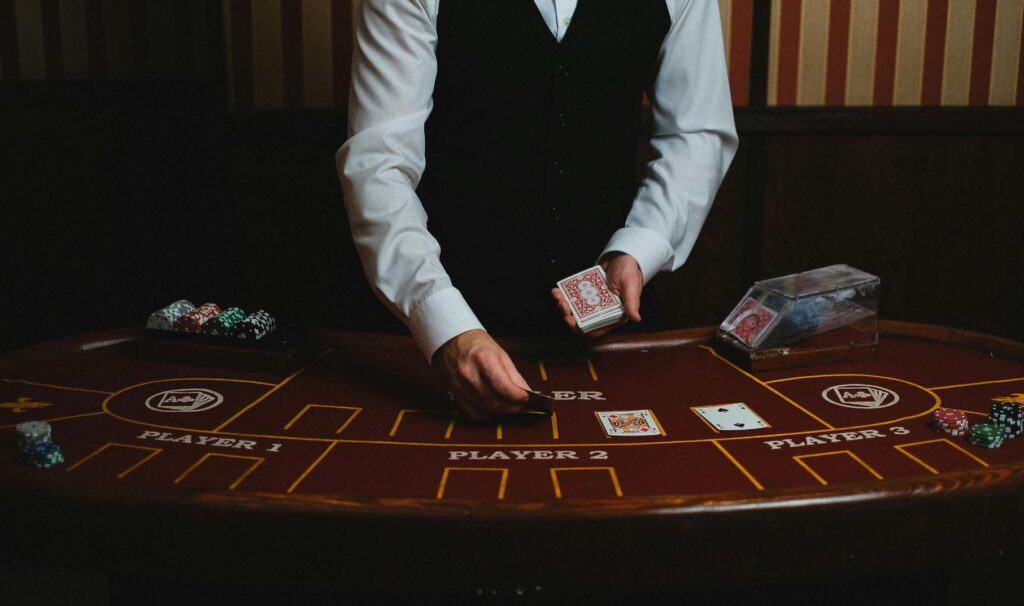One of the most enduring card games of all time, poker’s roots can be traced back to the 16th century. Allegedly a European invention, the classic card game has since expanded to be a global hit.

One of the countries in which poker has really taken off is the US. The American poker landscape is widely considered the game’s biggest market and is responsible for helping push for further growth. Consider that the US is home to up to 20 million poker players today, per ESPN. On top of this, the country hosts many of the most impressive poker events. This includes multi-day competitions where prize pools can hit nearly $100 million.
But before poker got to this point, what were the trends that shaped it into the phenomenon it is today? Below, we’ve listed out these game-changing poker trends from the 50s to the present day so that you can find out.
1950s: Poker becomes a post-war casino staple
After World War II, the US saw the reemergence of various industries and activities that went against the strict rations and restrictions caused by the global conflict. This saw a surge in casinos now that people wanted to enjoy themselves and let loose. It was during this time that the Las Vegas Strip, as we know it, started its more aggressive expansion. For example, the legendary Las Vegas Sands and Dunes hotels first opened their high-rise buildings in this decade in anticipation of the onslaught of visitors. Knowing that many of these guests may be new to casinos and the Las Vegas area, poker became a staple card game, seeing as its familiarity would ensure more participation. This same reasoning still influences many casinos today. The aforementioned Sands and another hotel called Sahara, also opened in the ’50s, would even establish themselves as poker room destinations.
1960s: Texas Hold’em rises to be the most popular variant
Nowadays, Texas Hold’em is the most well-known version of the card game. Although its genesis can be traced back to the early 1900s, historians believe it only really gained traction when it was introduced to poker rooms in the ‘60s. Depending on the source, the reason why this became the trendy poker variation to play was either because of its straightforward mechanics or its depth, which can intrigue players of all levels. Regardless, though, what is clear is that the broader introduction of this poker variety helped it become a more popular pastime.
1970s: Poker tournaments become prestigious events
In the 1970s, poker operators recognized that the game was not attracting more attention from both casual and experienced parties. So as to better capitalize on this and provide a more organized venue, grander poker tournaments became a popular endeavor. Among the poker competitions that drew the most fanfare was the World Series of Poker (WSOP), which was first held in 1970. At the very first iteration of this, there were only six players, although there was already a $5,000 entry fee.
Many of the earliest WSOP competitors in this decade would later become some of the most respected in poker history.
For instance, one such individual was the late poker player Doyle Brunson. Called the Grandfather of Poker, Brunson played professionally for over 50 years. Throughout his storied poker career, he even won two WSOP bracelets, authored multiple poker books, and eventually got inducted into the Poker Hall of Fame.
1980s: Televised poker becomes the norm
After the establishment and popularity of regulated poker tourneys, the ’80s saw several of these same events televised. Because of the considerable viewership that these events experienced, it became acceptable for television networks to start airing these in dedicated timeslots. This trend started when CBS started annual airings of the WSOP’s final table, with ESPN soon following suit with their own hour-long segments. The success of televised poker was so significant that it later led to the creation of a special “hole camera,” which let viewers see each player’s cards.
1990s: Hollywood embraces poker
For almost as long as films have been made, poker has been a favorite feature. In most cases, though, it was usually positioned as a plot device that allowed the protagonist to show the audience their cunning and perceptiveness. By the time the 90s rolled in, though, poker started becoming a more central focus in numerous Hollywood gambling movies.
For instance, A-listers Mel Gibson, Jodie Foster, Alfred Molina, and James Garner starred in 1994’s Maverick. A period Western comedy, the film centered around a high-stakes poker contest that Gibson’s character is working toward. This movie raked in a decent amount at the box office and even received an Academy Award nomination. This decade also saw the release of what is arguably the most popular poker film to date, Rounders (1998).
Interestingly, while it only performed modestly at the box office, it was soon credited with helping encourage more people to take up poker. Many even go so far as to say this representation of poker on the big screen set the stage for the revolution that would follow in the next decade.
2000s: The online poker boom begins
Following the trend of Hollywood poker films in the ‘90s, the public felt more compelled to try their luck in a more demanding and elite poker landscape. Thankfully, this happened around the same time that online poker was released. With this, players from all walks of life could now more easily try their luck through virtual satellite games, which could allow them to qualify for bigger tourneys.
What really catapulted online poker into a huge, even global trend was poker icon Chris Moneymaker’s 2003 win. Then, an unknown accountant, Moneymaker, was able to make it to the WSOP Main Event after first qualifying by entering an $86 satellite online. Eventually, he ended up besting more established players to take home the $2.5 million grand prize. This spawned the Moneymaker Effect, which saw online poker boom as more players began to try to make the most of online means.
2010s: Poker streamers reach new audiences
In the 2010s, video-streaming platforms became more commonplace as consumers demanded more immediate, on-demand content. Specifically, sites that provided chat and comment features saw notable success as more fans were eager to interact with content creators. Some poker personalities wisely took advantage of this to reach new audiences by starting to stream their own poker content online.
One of the earliest poker streamers who helped champion this trend is Evan ‘Gripsed’ Jarvis. As early as 2008, he already had a YouTube channel after he started pursuing poker professionally that same year. Then, in 2012, he transitioned over to Twitch, where he would regale viewers with home games and grind sessions. Thanks to the impact he made, he was officially onboarded by ACR Poker in 2024. The country’s leading online poker site, ACR Poker is celebrated for embracing digitalization through efforts like digital tokens for secure banking and 24/7 access to huge tourneys. In his capacity as an ambassador with the operator, Jarvis is part of the site’s elite team of streamers called Stormers. Together, they represent one of the biggest poker streaming communities, which continues to draw in more new viewers regularly.
2020s: AI officially enters the poker scene
Poker and AI have long been linked, given that many developers have tested their own programs through simulated poker games. This is because poker is a limited knowledge game that can effectively gauge how well an AI system can make correct predictions based on limited information and observable patterns. More recently, though, it’s the poker scene’s turn to start using AI. Nowadays, poker operators such as Winning Poker Network, PokerGo, and PokerStars all use some form of AI to support their regular operations. This includes providing tailored real-time coaching, analyzing player behaviors for responsible gaming, and even streamlining tedious aspects of online poker gameplay to bridge any skills gaps.
To read more about the ’50s and past trends, please visit the rest of the articles on the Fifties website.
